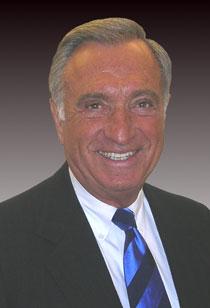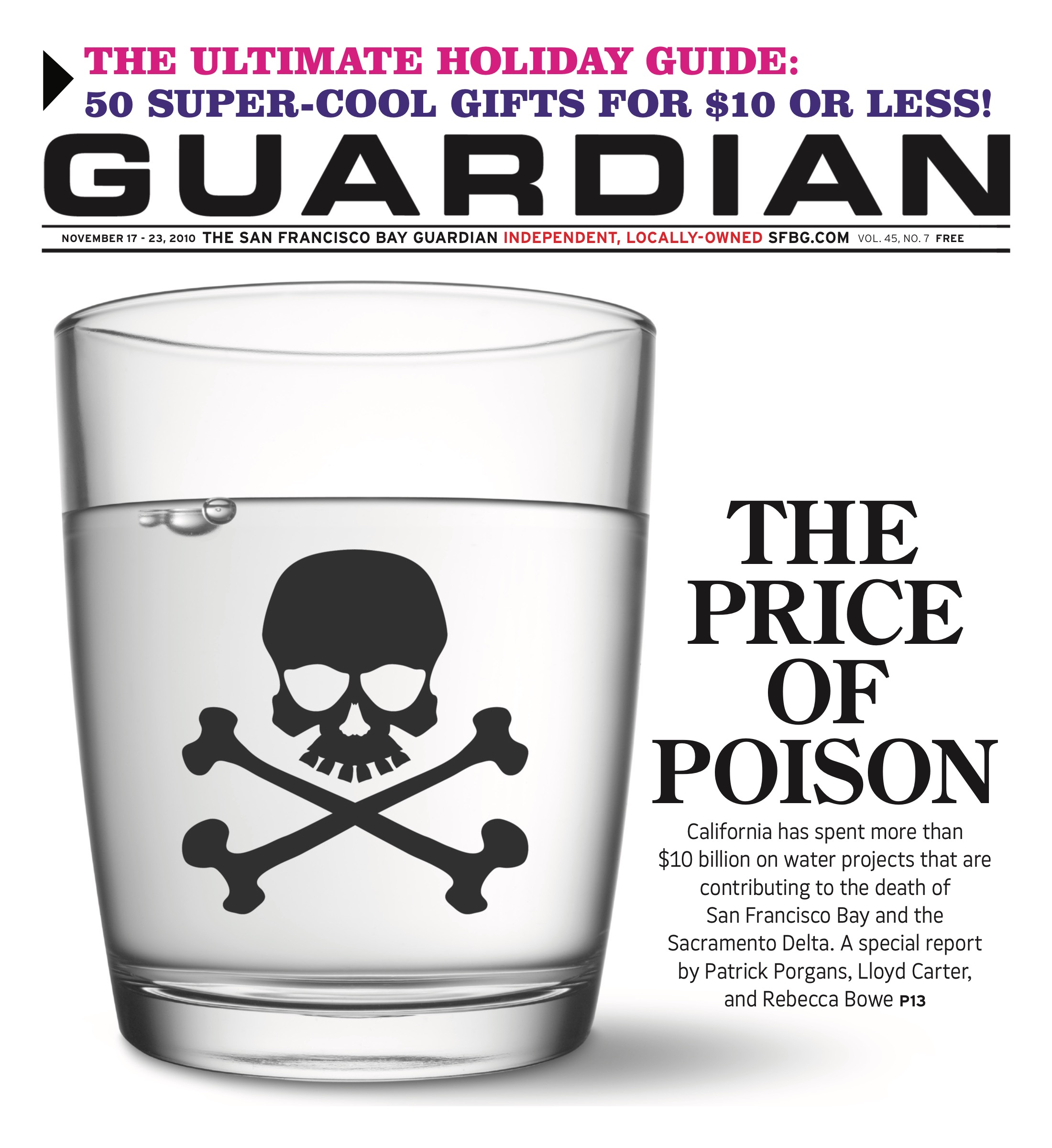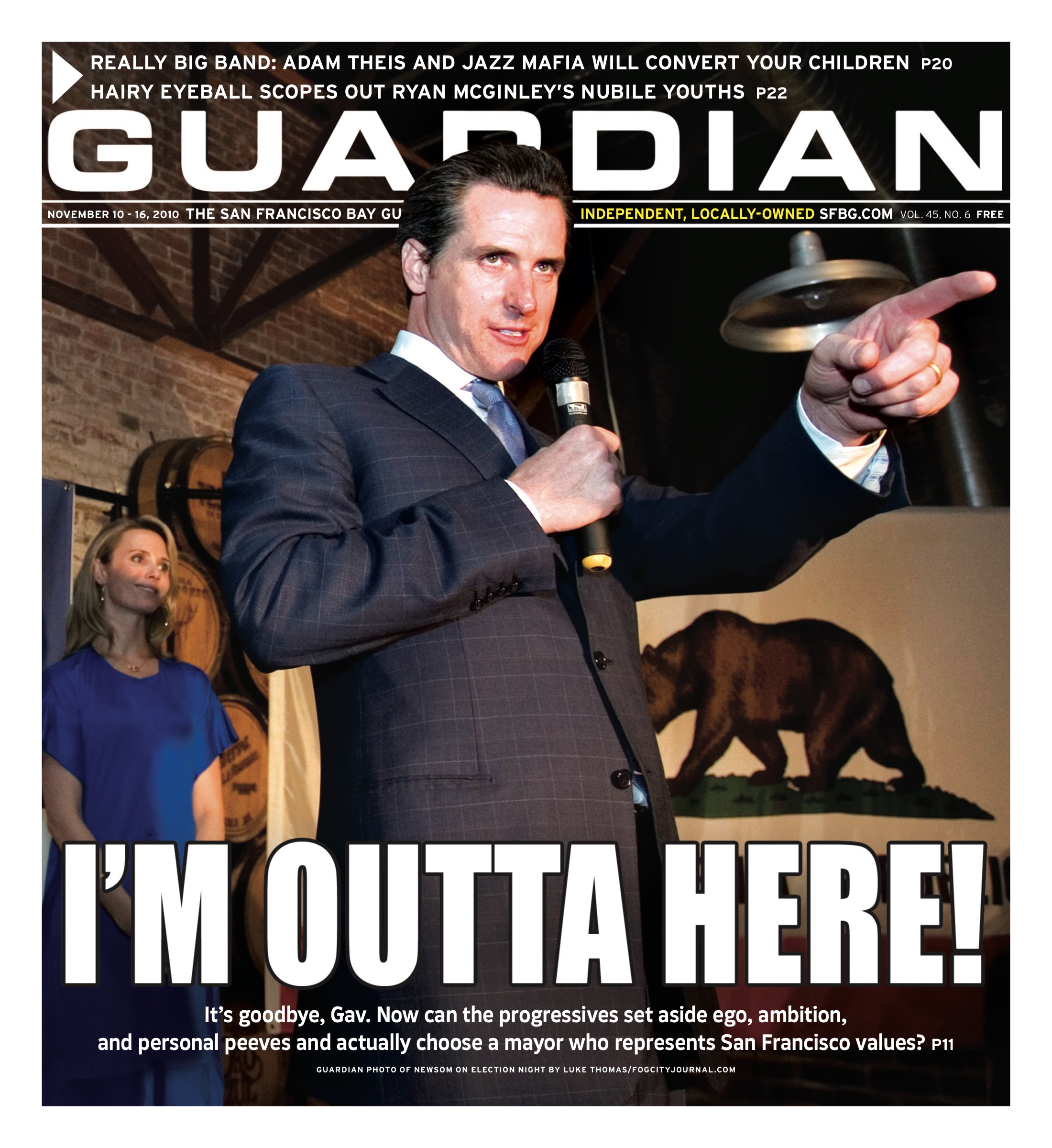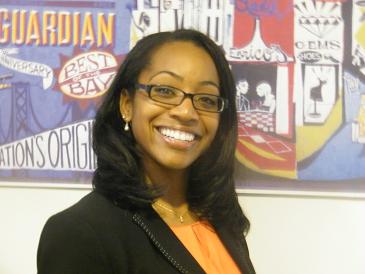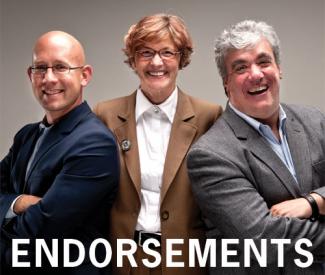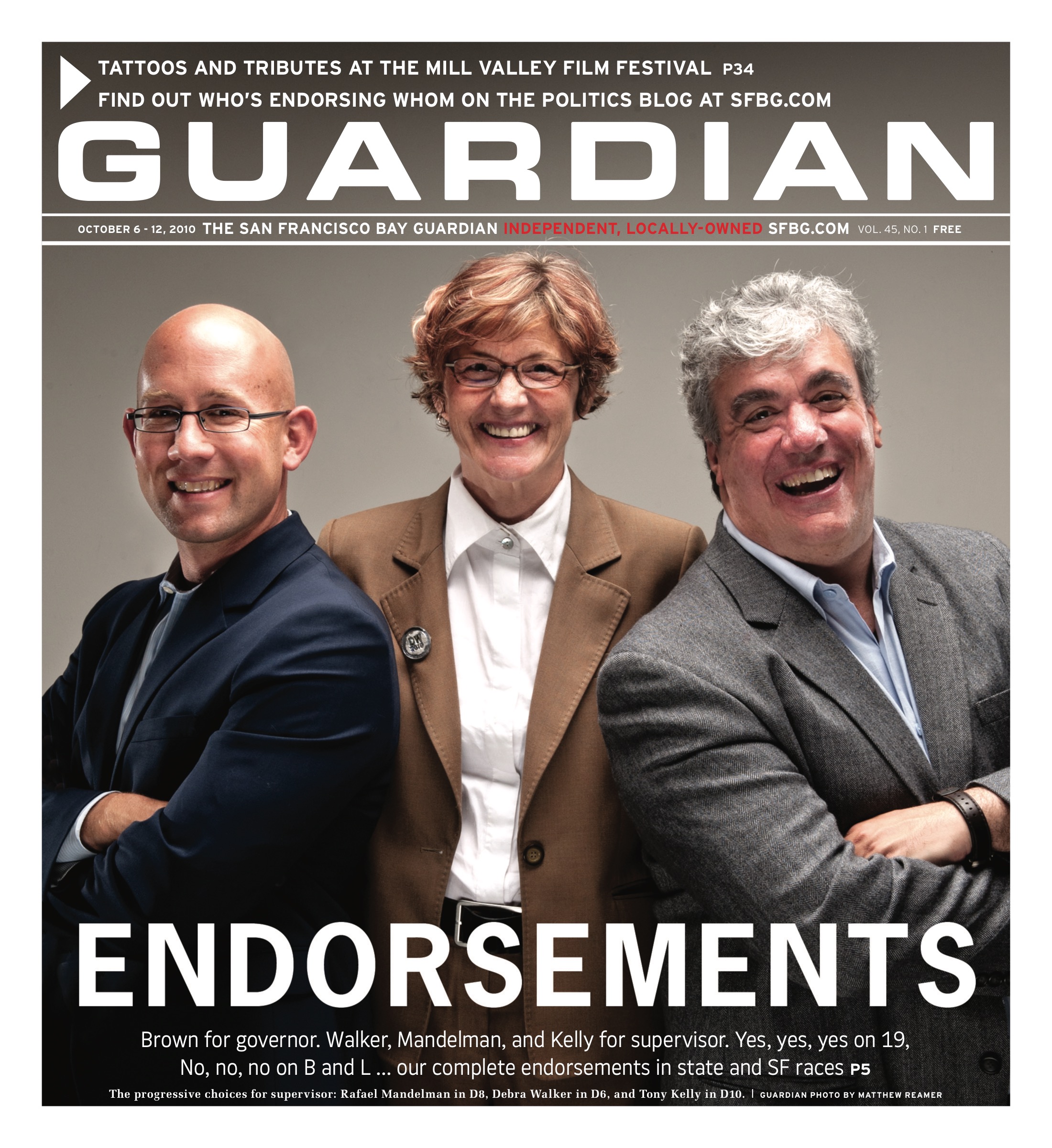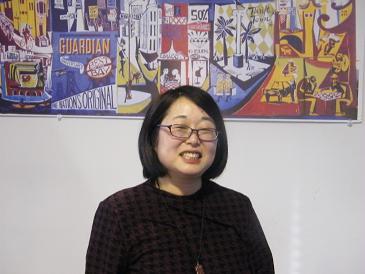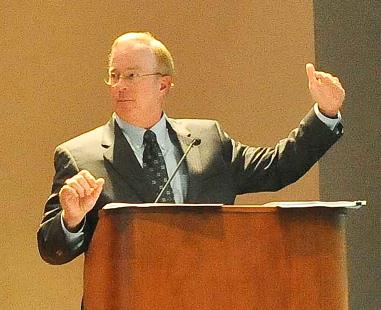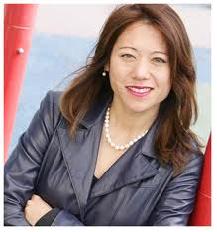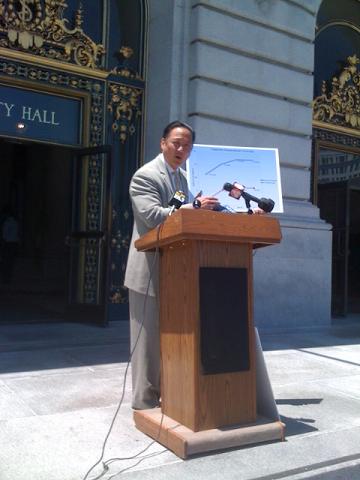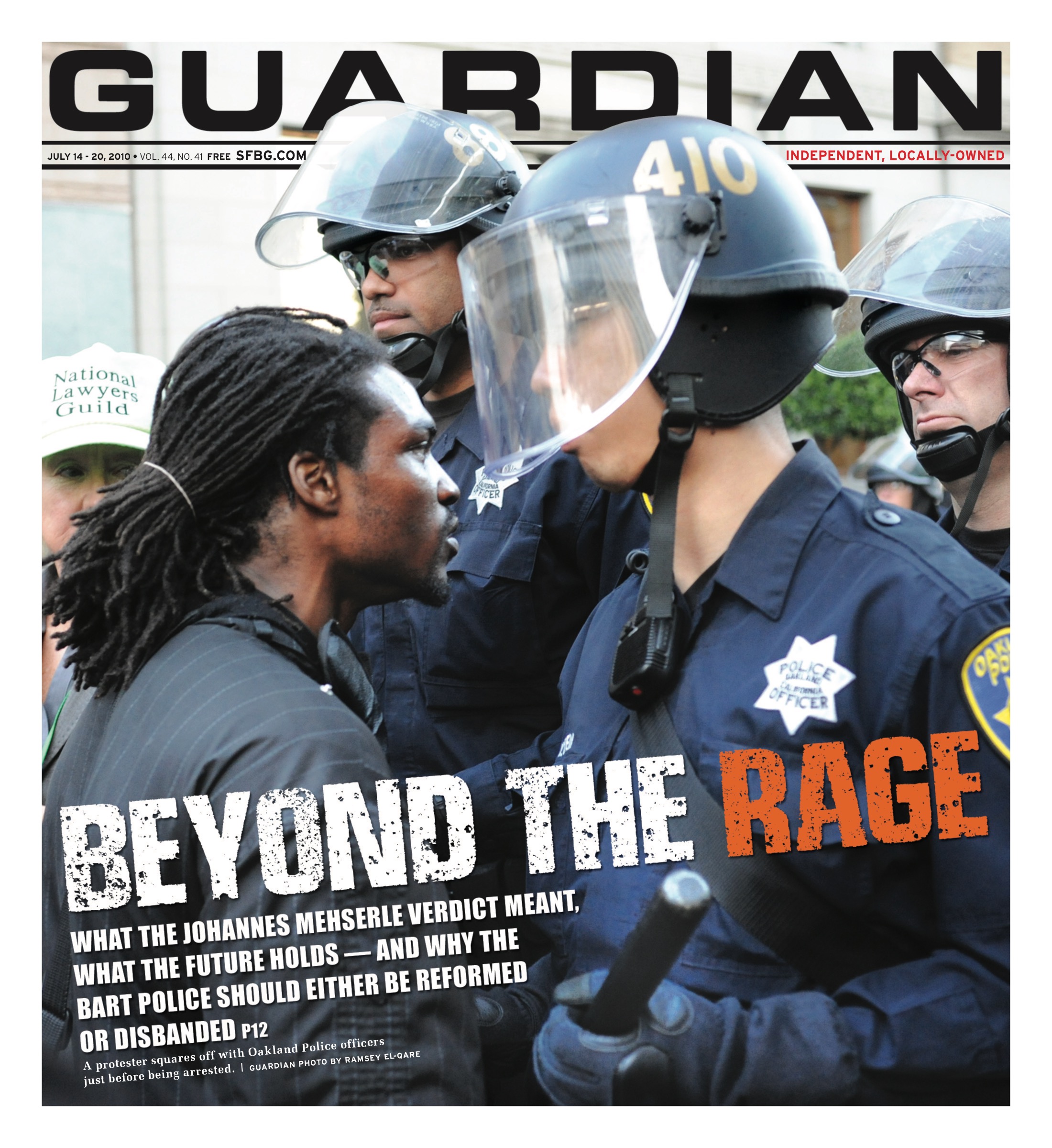Best of the Bay 2010 Editors Picks: City Living
BEST SMACKDOWN FROM THE MOUND
You can’t script ’em this good. Upstart A’s pitcher Dallas Braden gives New York Yankee peacock Alex Rodriguez an earful after A-Rod breaks an unspoken code of the baseball diamond by trotting across the pitching mound on his way back to first base. It’s not the first time A-Rod has disregarded one of these rules (see Toronto series, May 2007), and Braden doesn’t stand for it. A-Rod, and New York sports radio, quickly respond by belittling Braden as a smaller-timer. Lo, the Yankees eat their words a few weeks later when Braden pitches a perfect game — effectively putting himself in the company of baseball’s Hall of Fame immortals. But that’s not even the best part. Having lost his mother at a young age, Braden pitched his masterpiece on Mother’s Day … with the grandmother that raised him in attendance. It was a sports story for the ages. And after all that has and will be said about this feat, it was Braden’s grandma who summed it up best in a post game interview: “Stick it, A-Rod.”
www.oaklandathletics.com
BEST OPEN SOURCE PLAYPEN
Perhaps you are a geek. Or perhaps you just wish you were. Maybe you think all geeks are geniuses with mandatory Mensa memberships and haven’t tapped into your inner geek for fear of failure. Hie thee to Noisebridge, where dyed-in-the-wool geeks and their wannabe compatriots come together to explore technology and gaming in a nonscary, mostly noncompetitive environment. Want to learn how to circuit hack, program in Python, create apps for your overpriced cellular device — or speak a foreign language, play Go, pick locks, tie knots, and take over the world? Noisebridge is the place to test your skills, acquire new ones, and maybe pass along your own skills to the life hack community, which is growing by the week. The roomy warehouse space (formerly a clothing sweatshop) is large enough to fit a small herd of quasi-geniuses at one time, and the vibe is welcoming and smart.
2169 Mission, SF. (415) 425-3264, www.noisebridge.net
BEST BOTTLED BEAUTY
The haters didn’t think she’d make it out of the Bay. After all, she is made of trash. Well, not quite — Plastiki, the boat brainchild of David Rothschild and his Adventure Ecology team, was built from recycled plastics. A hull fashioned from 12,500 discarded plastic bottles was one of her more notable attributes, as were the vertical kitchen garden that twines about her mast and a bicycle-powered energy generator. The craft was fashioned as an apt calling card for Rothschild and crew’s planned visit to the North Pacific Gyre, the neighborhood where the Pacific Trash Vortex (or if you like, the Great Pacific Garbage Patch) dismayingly swirls. Plastiki’s launch three months ago from Sausalito began a journey of nearly 8,000 miles to the pole of pollution (at an average speed that barely rivals that of your mom’s morning jog). She made it to Sydney on July 19, slightly worse for wear but having raised many an eyebrow and consciousness regarding our disastrous penchant for plastics.
www.theplastiki.com
BEST FOUR-ON-FOUR BALLIN’
Still got a mad case of World Cup fever? There’s a lot of time between now and Brazil’s hosting gig in 2014, but there’s no reason to let your newfound love of football — er, soccer — dwindle. Why not try hitting the pitch yourself? All abilities and ages are welcome at SoccerFours, a four-on-four league that meets weekly at various SF and East Bay fields. The “games” are more like training workshops: there’s no scoreboard, ergo no hooligan-style competitiveness. Instead, players are encouraged to work on their moves in a supportive (and fun!) environment. SoccerFours’ website — which declares the program’s focus to be on “fitness, teamwork, and skills” — lists currently available sessions ($7 for a single game; multi-session passes are also available). How else are you gonna discover that you have an inner Lionel Messi waiting to break out?
www.soccerfours.com
BEST ON-RAMP TO OVERALLS

Photo by Caitlin Donohue
Pop quiz: which is better for an inner city neighborhood: a freeway or a farm? The answer’s a no-brainer for the volunteers at Hayes Valley Farm, which occupies the area on and around an unused on-ramp damaged in the Loma Prieta quake and abandoned since 1989. Those volunteers have already put thousands of hours into the new urban farming oasis. From the fava beans planted to purge the exhausted soil of the petrochemicals that once spewed from passing cars to the hundreds of fruit trees that now occupy the still-there on-ramp’s ascent to blue sky (“the biggest garden patio in the city,” as volunteers have dubbed its leafy lanes), the farm is providing an educational opportunity for all those who thought they forsook their farmer fantasies when they chose to live here. Now offering kids’ classes, permaculture boot camp for the uninitiated, and environmental movie nights for all comers, Hayes Valley has planted a seed in the ‘hood for food security.
450 Laguna, SF. (415) 763-7645, www.hayesvalleyfarm.com
BEST AIRBORNE ASHTANGA
A good yoga class often makes your body feel light as a feather — but Oakland’s new Flying Yoga Shala is all about making your practice feather-like in a more literal fashion. Jump, stretch, dance, cartwheel off your mat’s restrictive rectangle, and levitate your way to transcendent meditation. This airborne Temescal spot offers classes in acrobatic circuit training, aerial yoga, dance, and even some traditional basics — but nothing ordinary whatsoever, and definitely nothing even close to boring. Break the yoga mold and shape your body into a ridiculously sexy form with a range of thrill-seeking instructors, including the incredible Laura Camp, the studio’s owner and director who part-times as a circus aerialist and writer. While there are multiple classes with a not-so-beginner curriculum, the studio does offer options for every level. Just wear something airy and be prepared to soar.
4308 Telegraph, Oakl. www.flyingyogashala.com
BEST FEE FOR BIG QI
Perhaps in the battle over health care, we’d do well to consider the preventive approach of Eastern medicine: regularly maintain your health and therefore avoid the health care industry altogether. It’s a perspective that is keenly addressed at Bu Tong Acupuncture. Run by Julie Baumhoffer, a graduate of the American College of Traditional Chinese Medicine in Potrero Hill, this community wellness center offers an array of affordable holistic options for self-health as a priority rather than a burden. In addition to acupuncture, Bu Tong offers massage therapy, nutritional counseling, and creative arts psychotherapy in a sort of one-stop shopping for your physical well-being. And with beginning acupuncture rates starting as low as $10 per session, you can probably afford to stick it to Big Pharma.
2390 Mission, SF. (415) 282-7246, www.butongacupuncture.com
BEST STAND AGAINST SIT/LIE

Photo by Julian Davis
Andy Blue has been a stalwart political activist on a variety of progressive San Francisco campaigns for years, doing whatever needed to be done in big election races from Matt Gonzalez’s 2003 mayoral run to this year’s underdog effort to defeat the PG&E-funded Proposition 16. But it was when cops and NIMBYs started pushing for a sit/lie ordinance to criminalize the simple act of kicking it on a San Francisco sidewalk that Andy’s creativity, leadership abilities, and tireless advocacy really shone. He organized and promoted the Stand Against Sit/Lie campaign that encouraged dozens of small protests and events on sidewalks throughout the city, an effort that shifted the momentum of the debate and helped lead to the defeat of the ordinance. Although Mayor Gavin Newsom has placed the measure on the November ballot, Blue and his crew plan to keep fighting it — and anyone who tries to score cheap political points in pushing it.
www.standagainstsitlie.org
BEST LOCAL LOQUAT LOCATORS
Well, what do you know. San Francisco really is the land of fruits and nuts. Our hedgerows are bustling with bounty, our byways bursting with ripe Meyer lemons, Marina strawberries, olives, apples, loquats, almonds, and figs. Where? All around — if you know where to look. Juicy online guide Neighborhood Fruit will tell you exactly where to find fresh, seasonal goodies right in your own or your neighbor’s backyard. Led by founders Kaytea Petro and Oriana Sarac, the Neighborhood Fruit team has registered thousands of wild fruit trees ripe for the picking. Got more yummy yield than you can possibly can? Sign up to let other fruit fiends knock on your door and pick those extraneous plums with aplomb. It’s the most delicious kind of community bonding.
www.neighborhoodfruit.com
BEST SOARING PROSE
Sling a bookmark any direction in the city and you’ll hit a cache of literary history. Nowhere more so than on the fertile inking grounds of North Beach, where the ghosts of Kerouac, Ginsberg, et al. can easily be convinced to grab a beer or 12 with you at Vesuvio. After carousing with those ruminative spirits, you’d be forgiven for mistaking the sight of 23 glowing books floating above the intersection of Broadway and Columbus as mere Beat-stricken hallucination. But hark, mad one, to the call of those illuminated manuscripts: Brian Goggin and Dorka Keehn’s “Language of the Birds” art installation is solid as flesh. The tomes are part of the Department of Public Works’ 2008 Broadway streetscape improvement project, helping to make your pedestrian carousing a better-lit and therefore safer one. But enough about the earthly machinations. Dance like a dervish ‘neath the flashing pages and check under your toes for lines they’ve left behind.
Broadway and Columbus, SF
BEST PLACE TO PARK YOUR DINGY
The Guardian’s giving a Best of the Bay award … to a boat club? Blistering barnacles! You knew we’d sell out one of these days, right? Just. Kidding. See, the Bayview Boat Club isn’t your typical, exclusive “golden epaulet and waxed mustache” kind of operation, looking down at you from a platinum prow. (Wait a minute — waxed mustaches are actually kind of cool these days.) Since 1961, its China Basin doors have been open to membership applications from anyone with two member sponsors and at least a one-quarter interest in a seafaring vehicle — although its definition of “boat” is flexible. The BVBC also is well known for its giddy annual Beer Can Races and good time-bar times in the members-only clubhouse once the schooners ease into their slips. Live music, nautical-themed movies, art openings, and strong drinks are standard issue for its sailors. Shiver our timbers, you could be one of them.
489 Terry A Francois Blvd, SF. (415) 495-9500, www.bayviewboatclub.org
BEST SLOW GAME PINCH HITTERS
The pitcher adjusts his cap. The batter steps out of the box. The infielders huddle at the mound. Then six fastballs get fouled into the seats. Damn, baseball is exciting. At least in the AT&T Park bleachers you’ve got options (pretty girls, big cups of booze, Baywatch). But Giants fans at home must rely on the sportscasters for entertainment during the many lulls. So bully for you if you’re tuned in to the best in the business, Mike Krukow and Duane Kuiper of KNBR 680/1050 AM and CSN Bay Area TV. Mirthfully striding the base line that separates fill-time prattle from full-on provocation, the two banter like old pals, cracking wise about their combined 24 seasons in the majors and drawing on those years for pithy insights about the game at hand. When “America’s game” starts to sag, Kruk and Kuip happily resort to their second favorite pastime: using the tele-scribbler to “eliminate” people wearing Dodgers gear.
BEST POLITICAL SHIT-SIFTERS
Political websites are full of crap. Cranks, crooks, straight up sensationalism … We love it all, of course. But when we want to know what’s really going on in the down and dirty, smoke-filled backrooms of California politics, we click our way to progressive open source news site Calitics.com. East Bay keyboard-clackers Brian Leubitz and Robert Cruikshank stay well abreast of Sacramento’s whiz-bang wool-pulling, and you can get a bead on the biggest stories all around the state from the site’s open threads and links. Yet Calitics offers a lot more than shit-sifting: these folks understand what the news really means. Their analyses and interpretations are far more acute than those of the state’s lumbering daily newspapers. And Cruikshank is one of the few writers of any political slant who actually understands economics. Now, can they please work on getting some visuals up there? Photos, people, photos!
www.calitics.com
BEST ROYAL SCRUBDOWN
For spa-lovers seeking a simple, clean, quiet place for relaxation (with a lovely red clay sauna that “removes toxic superannuation”), it’s time to take a royal journey — to Imperial Spa. Hidden in a strip mall, also near Japan Center, Imperial also offers a rough touch: intense, full-body scrubs sure to remove all of the dead skin from your carcass. The masseuses here don’t play — their Korean massage passes the threshold of mere exfoliation to revive circulation and concludes with a combination of cucumber, yogurt, and milk that leaves you feeling shiny and new. Imperial Spa has separate men’s and women’s facilities, which means that it’s open to two genders seven days a week.
1875 Geary, SF. (415) 771-1114, www.imperialdayspa.com
BEST CHECK (ONE-TWO, ONE-TWO) ON YOUTH POVERTY
We’ve all heard the stereotypes about East Oakland. The drugs, the gangs — the future media superstars? Fearmongers aside, this neighborhood has some serious bright spots. Launched in 1997 in a colorful building next to Castlemont High School at the behest of students sick of violence in their schools, Youth Uprising infuses the lives of young people with the skills they need to get to where they want to go. On-the-job training programs that hook kids onto college tracks? Check. Top-of-the-line media arts center that teaches video production, music recording, and web design? Check. Dance studio, art classes, holistic health care center, and a staff who has walked — successfully — the same streets as YU’s members? You bet. The mic is set, can you hear them now?
877 MacArthur, Oakl. (510) 777-9909, www.youthuprising.org
BEST MURALS FOR DREAMERS

The way artist-appropriated, color-covered walls keep popping up in SF, it can be hard to pull your out-of-town friends indoors, even for some shut-eye. But book them a room at Hotel Des Arts. and they can revel in our city’s Technicolor bubble letters and moody characters, even in their dreams. That’s because Des Arts has tapped street art luminaries Chor Boogie, Sam Flores, Brian Barneclo, Tricia Choi (see above), Shepard Fairey, and others to make regular hotel décor look as lame as, well, regular hotel décor. It’s a dream collection of underground art. All four walls in each of the hotel’s painted rooms — even the bathrooms are tagged up — feature art work by the greats themselves. It’s the perfect spot to stash a buddy from abroad who can’t get enough of these city streets.
447 Bush, SF. (800) 956-4322, www.sfhoteldesarts.com
BEST MINI MEDITATION
Labyrinth lover Janet Scheuer had a dream to “create a quiet, restful spot” for people in San Francisco. The realization of her dream, the 23-foot wide Scott Street Labyrinth at Duboce Park, is just right for some brief lunchtime meditation, without the tourist crowds at Grace Cathedral’s marble behemoth or the somewhat harrowing journey through the Marin Headlands to reach the one at Eagle’s Point. A little avocado sandwich from Courtney’s up the street, a little ambulatory journey through the metaphor of life … What could be more perfectly serene? The jury’s still out on the recent refurbishment of the park in general — too much asphalt, not enough foliage, enormous cost — but this added gem puts an ingratiatingly spiritual polish on the whole project. There’s even a raised scale model to finger-trace for the sight-impaired or for those who want some practice before embarking on their brief-but-invigorating spiral contemplation cycle.
Scott Street between Duboce and Waller, SF
BEST WAG ‘N’ WASH

Photo by Ben Hopfer
Take it from Jules Winnfield, Samuel Jackson’s character in Pulp Fiction: “I wouldn’t go so far as to call a dog filthy, but they definitely dirty.” And when it’s bath time, pooches can turn any home into a wet, hairy, muddy nightmare. Avoid this by taking them to Pawtrero Bathhouse and Feed Company. The front of the Potrero Hill location looks like a typical pet store, but the back room is doggie-bath heaven. The floor is concrete, with a drain. Two large stainless steel baths cover one wall. You can walk your doggie up a ramp, close the door, throw on a complimentary rubber smock, and unleash a powerful warm-water hose on your sloppy Snoopy. Pawtrero offers a wide selection of organic, skin-sensitive soaps and shampoos to leave your mutt looking and smelling squeaky clean. Use the free towels to dry the beast off, put the smock back on the hook, and you’re out of there — for just $15.
199 Mississippi, SF. (415) 863-7279 and 199 Brannan, SF. (415) 882-7297, www.pawtrero.com
BEST SLIP ‘N’ SLIDES
For two years, Hamilton Recreation Center had been closed for renovations, depriving Western Addition residents of a public space to gather, get down, and, yes, exercise. But it reopened in March, tickling West Addys pink with a grade-A public place to play. We’re totally digging on the sparkling new b-ball courts, the vast acreage of tennis pitches and playground, the free-use cardio workout room, and the glorious pool. But alongside that pool is something that really churns our butterfly stroke: Hamilton Recreation Center’s water slides. That’s right — there are two of those slip ‘n’ slide babies, fit to dump squealing future Thorpedoes into the water with a great big splash. Pick your poison, spiral yellow or L-curve orange, and launch into the lanes below. Forget Six Flags, there are wet and wild times to be had closer to home. All ages welcome. (Alas, no coolers of ice-cold brewskis allowed.)
1900 Geary, SF. (415) 292-2008, www.sf-recpark.org
BEST ONLINE TIMESINKERS
Farmville. Fishville. Frontierville. Mafia Wars. Treasure Isle. Here you’ve gone through all the trouble of locating your old classmates and ex-coworkers on Facebook, and the only regular updates you receive from them are about the last virtual person they iced or how some orphan cow wandered onto their digital acreage. Moo! Blame the insidious explosion of social network gaming on SF’s own Zynga, the up-and-coming tech company founded by Mark Pincus and named after his bulldog, with a nod to an African warrior queen. Dedicated to “connecting people through games” (although in many cases disconnecting them as well) Zynga’s many addictive timesinks have claimed the afternoons of millions who should know better but just. Can’t. Stop. Collecting. Pixelated. Piranhas. Fine, we admit it, us too. That’s OK, feel free to hide our streams. But first, can you spare a bushel of virtual corn?
www.zynga.com
BEST DIRTY WORK IN THE WILD
As lovely as Golden Gate Park is to us city slickers, wilderness it’s not. That is, 96 percent of it isn’t. But the remaining 4 percent does qualify as “natural area,” which the San Francisco Natural Areas Program defines as spots where our little peninsula is preserved in all its original, biodiverse beauty. The organization should know — SFNAP is in charge of keeping these corners (which comprise some 500 acres in 35 parks including Bernal Hill, Corona Heights, and Glen Canyon Park) healthy and species-wealthy. The organization relies on the work of thousands of volunteers who get dirty in the name of preventing erosion, planting food for wildlife, pulling invasive species, and other saintly duties. The city is a jungle? Maybe not — but it is a salt marsh, desert, grassland, and woodland, and SFNAP means to keep it that way.
www.sfnap.org
BEST CITY HALL CROONER
A regular fixture at City Hall, Walter Paulson, a.k.a. “the singing guy,” stands out for his creative use of the two minutes allotted for public comment at board and commission sessions. He serenades supervisors with his own original a cappella ditties, taking full advantage of the mic and acoustics in the majestic board chambers without ever wandering off topic. His songs have been known to introduce comic relief to tense meetings, forcing even the most serious-minded supes to crack a smile and occasionally drawing a smattering of applause. Paulson proves that inspiration can be derived from even the driest, wonkiest policy discussions. And as he belts out melodies about planning documents or salary ordinances, he infuses something distinctly San Franciscan into the public record.
BEST KINKY ARROYO
An open secret: a freshwater creek flows freely through the Mission, albeit entombed beneath layers of concrete and asphalt. Water shortages and ground stabilization concerns have the city contemplating daylighting this ancient arroyo, but for now it remains hidden from view. Well, sort of. When the National Guard decided to build a new Armory at the intersection of Mission and 14th streets after the 1906 earthquake destroyed the old one, it kept a wee bit of creek exposed in the basement, just in case it might need an independent water source if the populace grew restless. (Good call on its part: the Armory served as a retreat when the guard shot strikers on Bloody Thursday in 1934.) The Armory has a new owner, of course, one that specializes in a more extreme form of militaristic fetishism and wet exposure. But you can still get a glimpse of that mossy bit of Mission Creek in Kink.com’s basement if you snag a spot on one of the BDSM adult film company’s tours of its jaw-dropping headquarters — and ask (beg?) nicely.
1800 Mission, SF. www.sfarmory.com, www.kink.com
Tours: http://www.brownpapertickets.com/event/120429
BEST HARD-BOILED PEREGRINATION
There’s been more than one Sam Spade — Dashiell Hammett’s prototypical The Maltese Falcon character was adapted many times from that hard-boiled 1930 novel, most famously by Bogart himself. But there’s only one Don Herron, author and intrepid creator of the Dashiell Hammett Tour. Meet the snap-brimmed Herron in the Civic Center (possibly with your favorite femme fatale in tow) for a fog-shrouded journey through Hammett’s San Franciscan haunts. The guide has been stalking these means streets since 1977, and he’ll gladly enumerate and elucidate the back alleys and byways where Hammett set his much-beloved private eye paperbacks. With Herron, you’re in good hands. So cinch that trench coat a notch tighter, keep ’em peeled for clues, and, please, beware of heavily lipsticked knockouts with an ax to grind.
www.donherron.com
BEST EMERALD TRAILS
“Every time I get on the green, it’s like a sigh of relief.” No, we didn’t just impel Renée Rivera, executive director of SF Bike Coalition, to get real about Proposition 19. She’s talking about the new protected green bike lanes on Market Street, one of the most exciting steps taken in the last year toward making our streets safer for cruisers of the two-wheel variety. The green lanes, which extend from Eighth Street to Gough, are partitioned from cars by waist-high, safe-hit white posts. And a movement is afoot to stretch the lanes further afield: the Bike Coalition got a commitment from the mayor to extend the verdant zone as far as the Ferry Building and is in talks to put similar lanes on Oak, Fell, Townsend, San Jose, and the Embarcadero.
Market between Eighth and Gough, SF
BEST SAND DUNE SLEUTHS
It’s been a wild world out in the western neighborhoods of San Francisco. Before the sidewalks came, the Richmond, Sunset, and other oceanside districts were a wonderland of sand dunes and historical curiosities. What was it like? Lack of information about the area’s past proved primo ponder fodder for Woody LaBounty, and inspired him to launch the Western Neighborhoods Project. Today the curious need only to partake in one of the group’s history walks, or look to its spectacularly detailed Outside Lands blog to benefit from the project’s insightful research on the bygone days of the avenues. Western wonderings have turned up tales that will hold even those on the other side of Twin Peaks rapt. LaBounty’s recently released book Carville-by-the-Sea excavates the intriguing bohemian vacation town of retired streetcars that cropped up on Ocean Beach back at the turn of the 20th century.
www.outsidelands.org
BEST NEIGHBORHOOD CANOODLING
Despite immediate proximity, rarely do the leaders of North Beach and Chinatown collaborate on an event, or do the residents of the two neighborhoods gather together in celebration of their shared heritage. What could break the ice more than a steaming heap of that Asian-Italian delicacy — noodles? This year the Chinatown Community Development Center and North Beach Merchants Association got together in the most delicious way possible: Noodlefest took Grant Avenue by storm, placing restaurant pasta powerfuls from both neighborhoods streetside in honor of the almighty macaroni and mein. The slurping multitudes — tasting tickets, which entitled purchasers to six hefty mini-meals, sold out in hours — dove into massive piles of (chow) fun and fettuccine. Besides the romantic appeal of reenacting that scene from Lady and the Tramp beneath decorative Chinese lanterns, this hopefully yearly event provided a warm, slippy bridge between these two intercontinental culinary titans.
www.chinatowncdc.org, www.northbeachmerchants.com
BEST OLD-FASHIONED SUMMER CAMP
Remember when summer camp was all about wandering around the woods, catching bugs, getting wet and muddy in the stream, roasting marshmallows, and doing stupid skits that involved cracking eggs on your head? Well, even in this city of fancy arts camps, computer camps, and other high-end sources of academic and personal growth for the urban child, there’s still a chance to be a kid. Right in town. And it’s cheap. More than 2,000 San Francisco kids make their way every summer to Glen Canyon Park, where Silver Tree Camp, run by SF Recreation and Park Department, eschews classroom lessons, electronic equipment, and intensive instruction of any kind. There are hikes, arts and crafts, and songs and skits in one of the few places in the big city that feels like wilderness. But a lot of the time, particularly in the before and after-care programs, is unstructured: the kids play outside. Like kids.
www.sfkids.org
BEST ‘DO FOR YOUR “I DO”
Weddings: they’re all fun and games and exorbitant expenses and heterosexual privilege — until the bride’s hair falls. Then? Disaster! Avoid any potential Bridezilla moments by calling upon the wizardly hair (and makeup) skills of one Armando Sarabia. His mobile beauty service, Get Your Do Up, brings the look to you, with on-location consultations and makeovers sure to guarantee love, honor, and obedience. He’ll take you through it all in style, from initial makeup color palette consultation to frisky honeymoon runway takeoff look. Sarabia’s talents aren’t just reserved for romantic matrimonials, either: girls’ nights out, media appearances, boudoir photography sessions, holiday gatherings, and just general cuts, colors, and styling all benefit from a good dose of Get Your Do Up glamour.
www.getyourdoup.com
BEST GOON SQUAD
SF native Mark Barbeau lives thousands of miles from the home stadium of his beloved Arsenal F.C. soccer team, a.k.a. the Gunners, in Islington, England. It could have been a lonely life had he not hit upon the idea to pull together some local Gunner goodwill. And thus was born the Bay Area Gooners, a ragtag bunch who gather in a North Beach Irish pub to pint their way through those early morning (time zone differences can’t stop this soccer spirit) footie matches between the “greatest team of all time” and whosoever dares to challenge them. Arsenal love runs strong in this group: during a recent power outage that affected the Gooners’ regular game-day perch at Maggie McGarry’s, Barbeau offered up his apartment’s living room to his Gunner-lovin’ brethren. Oh to be, oh to be, oh to be a Gooner!
www.bayareagooners.com
BEST PEOPLE POWER VS. CORPORATE POWER
When Pacific Gas and Electric Co. decided to put a measure on the California ballot that would effectively outlaw public power in the state, the situation looked bleak. PG&E set aside $30 million to spend pushing the measure, a total that later rose to more than $45 million. And yet, against some of the worst odds in American political history, a grassroots crew defeated one of the nation’s largest private utilities. The No on 16 campaign managed to line up almost every newspaper in the state against PG&E. It created and posted Web ads. It lobbied local government agencies to pass resolutions against the measure. Sup. Ross Mirkarimi led the effort in San Francisco, pushing other officials in the state to organize against it. Assembly Member Tom Ammiano and Sen. Mark Leno helped raise money and led the fight in Sacramento. Campaign consultant Gale Kaufman coordinated the effort. Matt Freedman, Mindy Spatt, and Mark Toney of the Utility Reform Network hosted meetings and handled campaign affairs that elected officials couldn’t. Volunteer public power activists including Eric Brooks, Bruce Wolfe, and Paul Fenn contributed time and effort, and Ben Zolno produced the campaign videos. And they saved public power in California.


